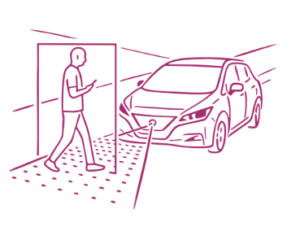(R)EVOLUTION - The smart windscreen
The smart windscreen
Originally, the windscreen was simply a piece of glass designed to protect occupants from dust, wind and debris. Today, it has become a central element of automotive safety and a technological medium of prime importance. The evolution of this component perfectly illustrates the transformation of the car from a mechanical object to a veritable hub of electronic and digital innovation.
Since the 2000s, the windscreen has been more than just a transparent barrier: it has become an interface between the driver and their environment. Thanks to the integration of sensors linked to ADAS (Advanced Driver Assistance Systems), it is capable of detecting rain to automatically activate the windscreen wipers, analysing the presence of obstacles and even triggering certain driving aids. By becoming a focal point for these technologies, it plays a direct role in accident prevention and driver comfort.
Progress has gone even further with the advent of head-up displays projected onto the windscreen. Drivers can now check their speed, navigation instructions or safety alerts without taking their eyes off the road. In a world where every fraction of a second counts, this innovation contributes to smoother and safer driving.
The role of the windscreen is not limited to housing sensors: it is also the result of a long scientific history. In the mid-20th century, American physicist Katharine Burr Blodgett paved the way for a quiet but decisive revolution by developing anti-reflective glass. Her research inspired modern developments in automotive glazing, leading to today’s smart windscreens, which offer optimal visibility in all lighting conditions.
Today, the windscreen perfectly illustrates the transformation of the automobile: it is no longer just a passive component, but a key player in active safety and driving comfort. Tomorrow, it could incorporate even more technology, becoming an interactive screen, an augmented reality display, or a connected information relay.
From a simple protective pane of glass to the nerve centre of intelligent systems, the windscreen reminds us that in the automotive industry, even the most mundane elements can become vectors for major progress.



